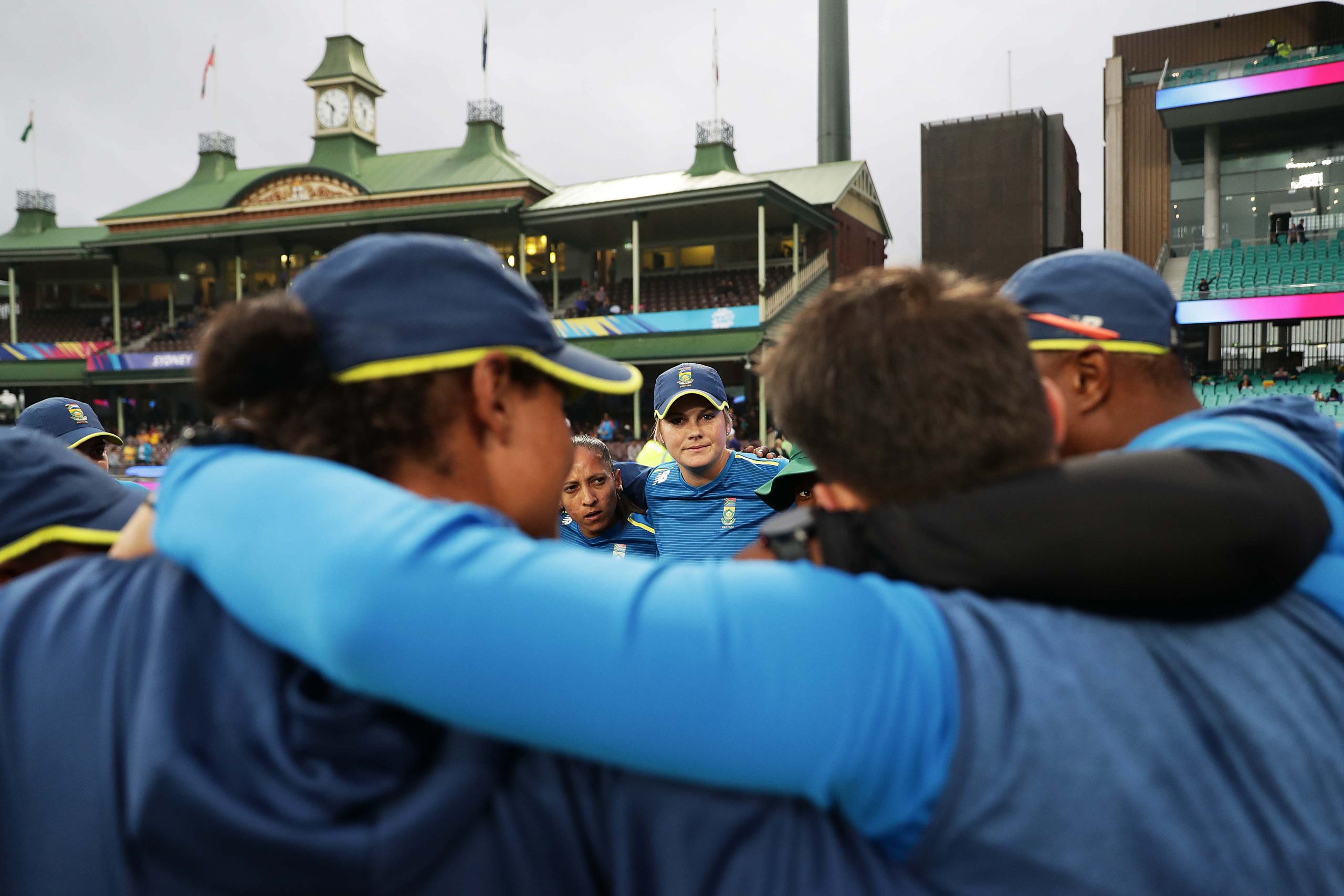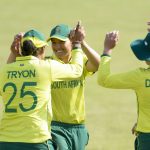World glory on the horizon for Proteas Women
The Proteas almost beat Australia in an enthralling semifinal, but more needs to be done to support the women’s team off the field – starting with closing the massive funding gap between the countr…
Author:
9 March 2020

Although rain is a blessing in South Africa, the country’s experience with it at cricket World Cups has been unusually cruel. It could have easily gone the other way for the Proteas at the ICC T20 Women’s World Cup, but that’s not the South African way.
“I’d rather lose than get a free pass to the final,” captain Dane van Niekerk said after seeing her side fall an agonising five runs short in the T20 World Cup semifinal against Australia on 5 March 2020. Australia went on to win the tournament on home soil on International Women’s Day.
Had their fixture with Australia been washed out, South Africa would have progressed ahead of the hosts – the perks of having topped their group. The first semifinal between England and India went that way.
Cricket, like life, always has both storms and sunshine.
For the Proteas, the storm hit before the players even got to the ground. Marizanne Kapp, one of game’s most lethal all-rounders and a critical member of the squad, had to watch from a hospital bed after being laid low with a viral infection.
“The worst day of my life,” she said on social media.
Related article:
But there has also been sunshine.
The South African team played more cricket than any other side in preparation for the tournament. The graft paid off when they broke their duck over England in their opening game. For the first time, they beat England at a World Cup, and they did so in a clutch game.
A few weeks prior, they won a series against New Zealand for the first time. Wins over Thailand and Pakistan ensured they topped the group, even if their final match against the West Indies was decided through interpretative dance.
Mignon du Preez helped the team over the line in her 100th T20 appearance. Lizelle Lee scored her maiden T20 century as South Africa amassed 195 for three – a new record at the finals – against first-timers Thailand.
The dreaded DLS
South African cricket, though, is on a first-name basis with Duckworth, Lewis and Stern. It wouldn’t be an ICC event without a visit from an old friend. When play did eventually get under way, Australia batted for the full 20 overs, stuttering to 134-5. In Kapp’s absence, Nadine de Klerk filled the void, taking three wickets and conceding just 19 runs.
With the way South Africa has played in the tournament, they would have backed themselves in a full chase. Instead, after a frustrating cloudburst, Van Niekerk and co were given a DLS-calculated chase of 98 in 13 overs. Australia were 81-4 after 13 overs, but DLS works in mysterious ways.
Around the stadium, heavy clouds lingered. Inside, South Africa’s top order unravelled. In ICC events where there has been a rain interruption, the requirement for a result is 10 overs a side. As the wickets tumbled and gentle drops of rain began to fall, few back home would have arched an eyebrow had a player suddenly come down with severe cramp.
Related article:
“I’m not going to sit here and lie and say you don’t think about it, but I have to give credit to the ground staff. They did absolutely everything to keep us on the park … we are here to play cricket,” Van Niekerk said afterwards when asked about stoppages and whether forcing a washout is something the team might have considered.
After 10 overs, South Africa needed 32 off 18 balls, a tough though not impossible task. But in a format where the margins are so small, it was one step too far – even for those who wear the tag of plucky underdog with pizzazz.
The team deserved so much more than a watered-down washout. In the past two years, they have repeatedly punched above their weight on a shoestring budget.
Huge financial gap
In 2017, Australia raised its total payments for women from AUS$7.5 million (just over R78 million) to AUS$55.2 million (over R575 million), with the minimum retainer for an Australian representative being AUS$72 076 (just over R750 000). In that same season, Cricket South Africa’s total budget for the women’s game was R4.8 million – not even 10% of Australia’s budget.
The funding for the women’s game in South Africa has grown enormously, increasing by 75% in the 2018/2019 season, after Cricket South Africa (CSA) and the South African Cricketers Association signed a memorandum of understanding. For the first time, South Africa’s women earned match fees and have their own rooms on tour, rather than having to share.
A further increase followed in 2019/2020, up 17% from the previous financial year. CSA introduced so-called “top-up contracts” for the first time, allowing non-contracted players to be automatically promoted.
Related article:
The infusion of cash has meant players have been able to go professional, including Laura Wolvaardt, who gave up studying medicine.
Players like Van Niekerk, who made her international debut when she was just 16, have paid their dues. “When we started, we played for the love of the game. For getting home to your mom cooking you a meal,” the captain recalled.
There’s still no professional domestic structure in place for women’s cricket in South Africa. Discussions about how to professionalise the sport are ongoing, but it will be a tough task in a country that’s entered another recession. You only get smarter by playing the smarter opponent, though – something coach Hilton Moreeng is all too aware of.
“An overall professional setup will also increase competition for a place in the team,” he said recently.
Taking things to the next level
Van Niekerk, though, isn’t content with holding her own against teams that have been professional for far longer than hers.
“It’s not enough. We’re not happy with the semifinals.”
It speaks of the ambition and culture the team has repeatedly referenced over the past three weeks. It’s also another opportunity for the team to do what they do best – shift perception.
“It is one of our goals to inspire girls to play the sport,” the skipper said when asked about being a pioneer for sportswomen. She paused before adding: “But it’s not just about girls. We want men to enjoy women’s cricket for what it is.”
South Africa’s next assignment will be an ODI and T20 series against Australia at home, starting on 22 March. The series against Australia could be billed as a revenge outing. And there would be nothing more satisfying than notching up another first by beating them. In one of the T20s, both sides will wear black in a campaign against gender-based violence.
Related article:
Next year, the Proteas will compete at the 50-over World Cup in New Zealand.
After arriving from a 13-hour flight from Sydney, despite being tired, homesick and heartbroken, Van Niekerk remained upbeat.
“We are going to win a World Cup, there’s no doubt about it,” she beamed.
For so long, it’s been storms. Surely, it’s time for more sunshine?




